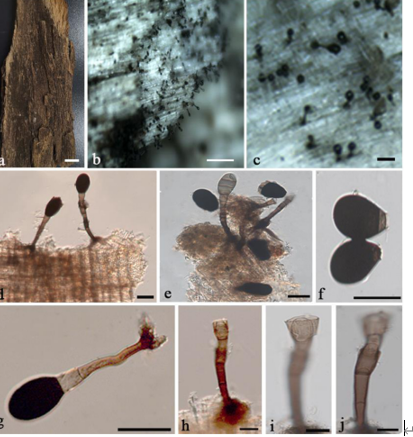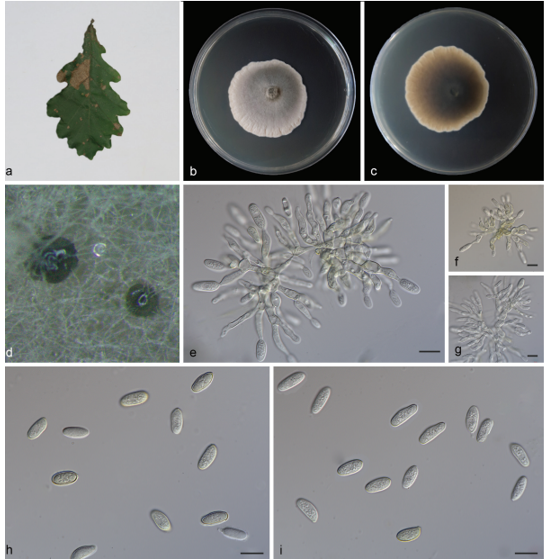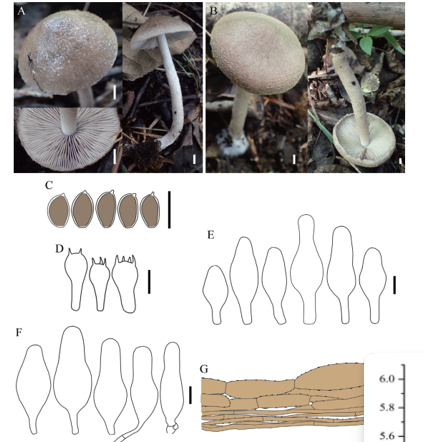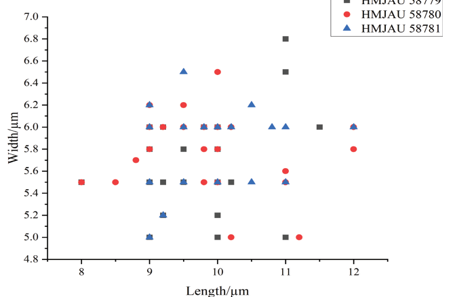Tomentella griseomarginata H.S. Yuan, X. Lu & Y.C. Dai 2020
Index Fungorum number: IF555748; Facesoffungi number: FoF 05628
Holotype: CHINA, Jilin Province, Changbaishan Nature Reserve, on fallen angiosperm branch, 10 August 2016, Yuan 11468 (IFP 019295, holotype), Yuan 11458 (IFP 019296).
Morphological description
Basidiocarps annual, resupinate, adherent to the substrate, mucedinoid, without odour or taste when fresh, 0.3–0.6 mm thick, continuous. Hymenophoral surface smooth, greyish brown to dark brown (6D3–6F5) and turning lighter than subiculum when dry. Sterile margin often indeterminate, farinaceous, paler than hymenophore, grey to orange-grey
(5B1–5B2). Rhizomorphs absent. Subicular hyphae monomitic; generative hyphae clamped and rarely simple septate, thick-walled, occasionally branched, 4–6 μm diam, without encrustation; subicular hyphal cells short and not inflated, brown in KOH, cyanophilous, inamyloid. Subhymenial hyphae clamped and rarely simple septate, thin-walled, rarely branched, 4–6 μm diam; hyphal cells short and not inflated, pale brown in KOH, acyanophilous, inamyloid. Cystidia absent. Basidia 15–40 μm long and 5–9 μm diam at apex, 3–5.5 μm at base, with a clamp connection at base, clavate, not stalked, sinuous, without transverse septa, pale brown in KOH and in distilled water, 4-sterigmate; sterigmata 2–5 μm long and 1.5–2 μm diam at base. Basidiospores slightly thick-walled, (5.5–)6.5–7(–7.5) × (5.5–)6–6.5(–7) μm, L = 6.86 μm, W = 6.28 μm, Q = 1.05–1.15 (n = 60/2), globose to subglobose in frontal and lateral views, echinulate, pale brown in KOH and in distilled water, cyanophilous, inamyloid; echinuli usually isolated, sometimes grouped in 2 or more, up to 1 μm long.
Habitat: On fallen angiosperm branch.
Distribution: In China.
GenBank Accession: ITS: MK211721, MK211720; LSU: MK446383, MK446382.
Notes: Tomentella clavigera, T. subclavigera and T. griseomarginata are closely related in the phylogeny (Fig. 111). They share similar characteristics: an indeterminate and farinaceous sterile margin, short subhymenial hyphal cells, clavate cystidia and the absence of rhizomorphs. However, T. clavigera and T. subclavigera differ from T. griseomarginata by having thin-walled subicular hyphae and subglobose to bi- and tri-lobed basidiospores (Kõljalg 1996; Melo et al. 1998; Daemmrich 2006). T. griseocastanea also resembles T. griseomarginata by having mucedinoid and continuous basidiocarps adherent to the substrate, a farinaceous sterile margin, clavate basidia and the absence of rhizomorphs and cystidia. However, the former species is differentiated by a greyish brown sterile margin and subglobose to bi-, tri- or quadra-lobed basidiospores.
Reference: Hai‑Sheng Yuan1,2· Xu Lu1,2 · Yu‑Cheng Dai3 ·
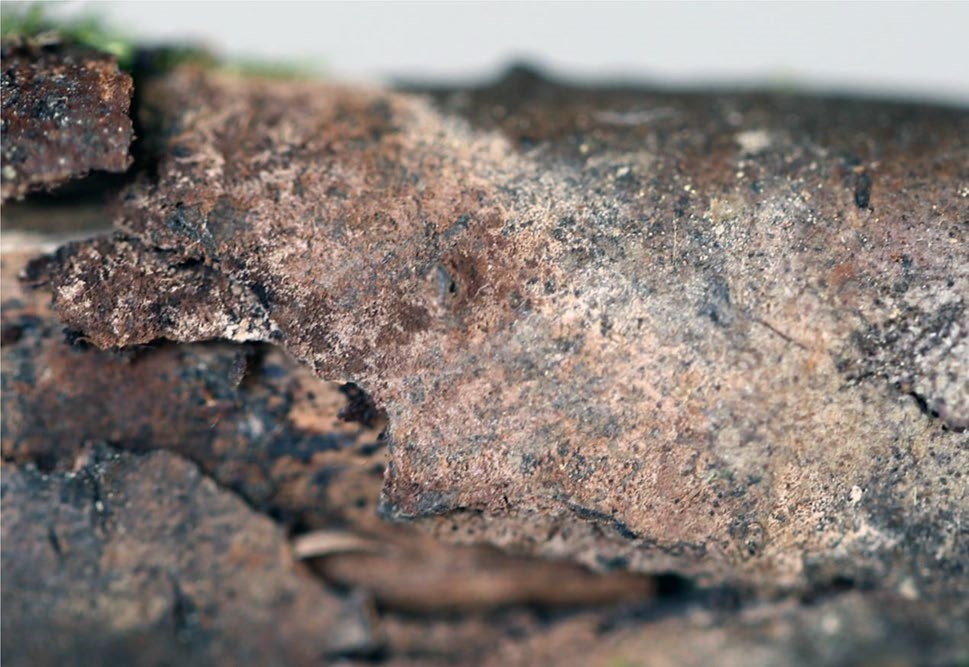
A basidiocarp of Tomentella griseomarginata (IFP 019295, holotype)


